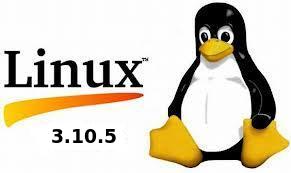The latest stable Linux Kernel 3.10.5 has been released. All users of the 3.10 kernel series are urged to upgrade as soon as possible. Here’s how to install / upgrade in Ubuntu 13.04 Raring, 12.04 Precise and 12.10 Quantal.
UPDATE: The 3.10 kernel series has reached 3.10.6, see this tutorial.
Linux kernel 3.10.5 contains lots of fixes and improvements, such as updated video drivers (Radeon, i915, Nouveau, etc.), updated iSCSI, MD, RAID, Wireless, ATA, SATA, ACPI and USB drivers, as well as sound improvements.
Install / Upgrade Kernel 3.10.5
Press Ctrl+Alt+T to open terminal for running commands. When it opens, follow below steps:
For 32-bit system, run below commands to download the Debs:
wget http://kernel.ubuntu.com/~kernel-ppa/mainline/v3.10.5-saucy/linux-headers-3.10.5-031005-generic_3.10.5-031005.201308040618_i386.deb wget http://kernel.ubuntu.com/~kernel-ppa/mainline/v3.10.5-saucy/linux-headers-3.10.5-031005_3.10.5-031005.201308040618_all.deb wget http://kernel.ubuntu.com/~kernel-ppa/mainline/v3.10.5-saucy/linux-image-3.10.5-031005-generic_3.10.5-031005.201308040618_i386.deb
For 64-bit system, run beloww commands instead:
wget http://kernel.ubuntu.com/~kernel-ppa/mainline/v3.10.5-saucy/linux-headers-3.10.5-031005-generic_3.10.5-031005.201308040618_amd64.deb wget http://kernel.ubuntu.com/~kernel-ppa/mainline/v3.10.5-saucy/linux-headers-3.10.5-031005_3.10.5-031005.201308040618_all.deb wget http://kernel.ubuntu.com/~kernel-ppa/mainline/v3.10.5-saucy/linux-image-3.10.5-031005-generic_3.10.5-031005.201308040618_amd64.deb
After downloading the packages, both 32-bit & 64-bit can run below commands to install them:
sudo dpkg -i linux-headers-3.10.5*.deb linux-image-3.10.5*.deb
Once installed, update grub to apply changes:
sudo update-grub
(Optional) To remove Linux Kernel 3.10.5, run below commands in terminal:
sudo apt-get purge linux-image-3.10.5*
